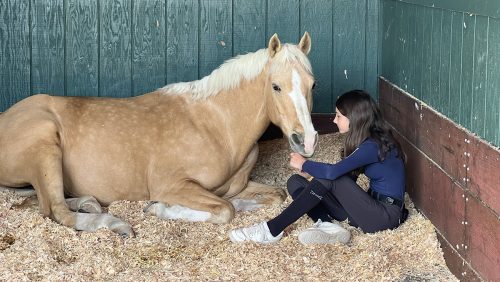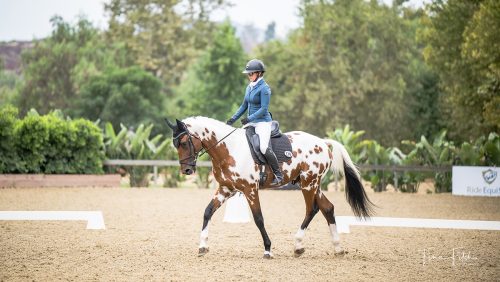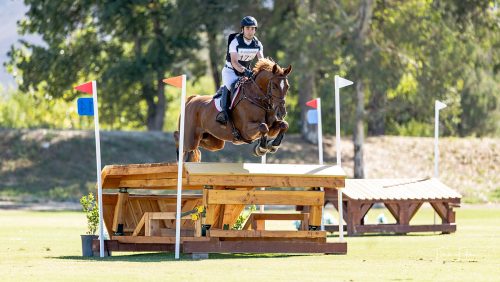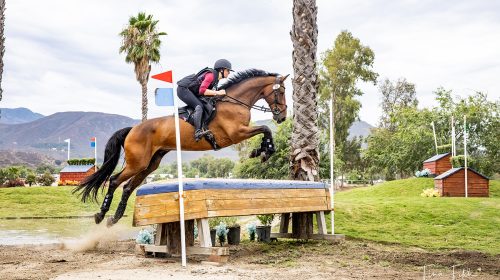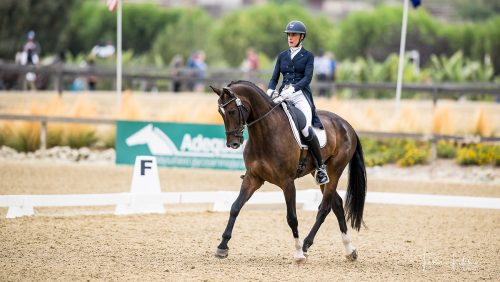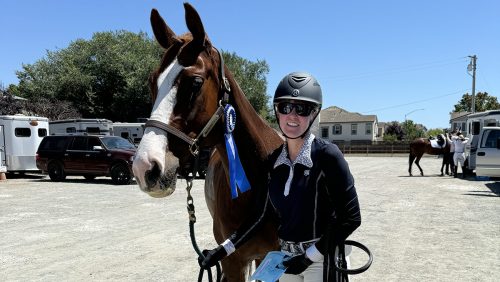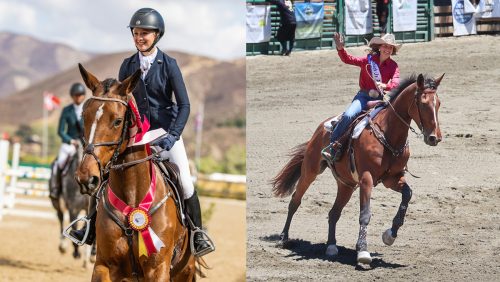In this two-part report, we are looking at the challenges eventing organizers face in recruiting and retaining enough volunteers to run their horse trials. In Part 1, we’ll outline what organizers have identified as the reasons for the growing problem. In Part 2, we’ll look at what this volunteer crisis means for the future of the sport and possible solutions to the problem.
Every year or two, event organizer Emily Holmes’ frustration gets to a breaking point, and she pours it all out in a Facebook post.
The most recent missive was on Valentine’s Day, right smack in the middle of the winter eventing season in Florida. Holmes organizes the Ocala International and Ocala I and II Horse Trials, in addition to being a U.S. Equestrian Federation technical delegate.
“I’ve been outspoken for years about the need for volunteers and the direction of the sport of eventing,” she wrote. “Time and time again, as I look across the desk at my organizing committee, at the TD I’ve hired, at the Officials Continuing Education this past weekend … I’ve lamented the lack of young people volunteering, the diminishing numbers, and the number one question: How do we run a horse trials of 620 horses … with no volunteers?”

In recent years, organizers have found themselves in a never-ending cycle of sending constant emails and social media posts pleading, with increasing desperation, for a few more jump judges, dressage scribes, warm-up stewards or parking attendants. At the last minute, enough (or almost enough) warm bodies are procured for the show to function, but it starts all over again at the next event.
The result is that you’ll sometimes find the event organizer sitting in the judge’s booth scribing for dressage because she couldn’t find a volunteer, so she filled in the position herself. You’ll find the cross-country starter also acting as jump judge for the first two fences because he can see them from the start box. Or you’ll note a single jump judge covering four different fences that he can see from one vantage point on the top of the hill—two on the beginning of the course, and two on the end, so sometimes he’s watching horses both coming and going. When things are dire, and there aren’t enough volunteers to serve as jump judges, you might even see an official following a competitor on cross-country on a gator, at a safe distance, to score their round.
The nature of the sport, with three different disciplines often running simultaneously on a large piece of land, has always required small armies of volunteers. It’s also part of the sport’s ethos—a friendly, welcoming space with a sense of camaraderie, where competitors are always sent into the ring or out of the start box with a cheery, “Have a great ride!” But across the country, event organizers say the community spirit of everyone pitching in is being lost, and the struggle to find enough volunteers willing to give up a weekend day to stand out in the soaking rain or blazing sun is never ending, and it’s getting worse.
So the frustration builds up until it boils over, Holmes said.
“Every couple of years I go on this long-ass Facebook rant like I did, and it helps,” she said. “I also have a master’s in PR, so I kind of work the system a bit. But it helps. When you raise awareness, and you throw a giant stink fit, it helps. And then people get complacent, and then every event struggles for volunteers, and in 18 months we’re kind of back in the same place.”
What Your Entry Fees Do And Don’t Cover
Kari Randle-Bright, who manages the Texas Rose Horse Park Horse Trials in Tyler, Texas, recalled a competitor’s father at a recent event who bristled when asked to volunteer.
“He goes, ‘Well, I’m paying all this money. Why on God’s green earth should I be out here [volunteering]?’ ” she said. “And I’m like, ‘Because your entry fee pays for the cost to have the facility and the officials and all of the things—the jumps, the paint, everything under the sun. We need people to volunteer to help put our sport on.’
“In the dressage world and the hunter/jumper world, the gate people are paid, the ring stewards are paid, everybody’s paid, which then in turn makes [their] entries go up even more,” she continued. “Could you imagine if [in eventing] we had to pay for our warm-up ring people, our gate people, our scribes, our jump judges?”
“In the dressage world and the hunter/jumper world, the gate people are paid, the ring stewards are paid, everybody’s paid, which then in turn makes [their] entries go up even more. Could you imagine if we had to pay for our warm-up ring people, our gate people, our scribes, our jump judges?”
Kari Randle-Bright, horse trials organizer
The paid staff primarily used at dressage and hunter/ jumper shows offer competitors a level of professionalism and continuity that they may not see at an event, where a volunteer warm-up steward or bit-checker might be in their first day on the job or might be replaced by someone new at lunch because they could commit to helping a half day instead of a full one. But those perks come at a significant cost, said Sharyn Antico. Antico, one of the organizers of Millbrook Horse Trials (New York), a technical delegate, and the U.S. Eventing Association’s vice president of competitions and chair of the USEA Organizers’ Committee, who summed up the existential threat of the volunteering crisis:
“Our sport could not exist without volunteers,” she said. “Competitions can’t afford to pay every single volunteer that comes to help out at a competition.”
ADVERTISEMENT
She pointed to the difference in entry fees between events and dressage or hunter/jumper shows.
“Those costs are not equitable; they’re not the same. And people in our sport, they complain all the time about the rising costs of entering an event. But when you compare that to a dressage show or a hunter/jumper show, it is nothing in comparison to the fees those disciplines are paying,” she said.
Across the board, event organizers are having to raise entry fees, she continued. “We had to do this at Millbrook,” she said. “When we look at the cost, we have to raise our fees because we have to be able to balance our budget, and our entry fees don’t absorb what it costs to put into running that competition.”
As an official, Antico said, she’ll sometimes have to tell an organizer that an event needs improvements to keep up with the current standard. That might mean redoing a bank complex or a water complex—expensive propositions. Today’s event riders also want permanent rings with all-weather footing, she said; they’re less willing to tolerate a maybe-not-quite-level dressage ring set up in a pasture. All of those improvements cost money.
“When you get, I’ll say, ‘spoiled’ with competing in all-weather rings, it’s hard to go back to grass and not know what the weather’s going to be like, and if the ground is going to be rock-hard, or if there’s going to be rain and mud,” said Antico. “People aren’t as willing to compete in those types of conditions anymore.”
So while entry fees have been going up (just like the costs of everything else), it doesn’t mean events are making a profit or can afford to pay all of the people who pitch in to pull off a horse trial. Volunteers are still required for the sport to function.
“Sometimes I think it just comes down to the thought process of the competitors,” said Randle-Bright. “They don’t have a good concept of what it costs to put on an event, or what their entry fees do and do not cover.”
A Fading Sense Of Community
For much of its history, eventing has had a strong association with fox hunting and the U.S. Pony Clubs, but those bonds have frayed in recent years as the sport has become more professional, with riders more closely associated with individual trainers than local hunts or Pony Clubs. At the same time, many long-running events at private family farms, with established corps of volunteers, have dropped off the calendar, replaced by events at equestrian centers, where various organizing groups move in for their competition and then make way for a different group the next weekend.
All that has led to a lessened sense of community, said Matt Trynoski, a USEF technical delegate and organizer of the Fox River Valley Pony Club Horse Trials (Illinois), which has been a staple in the Midwestern eventing scene since 1970. The event benefits not only from its association with the Pony Club, but also with the Fox River Valley Hunt and the Riding Club of Barrington Hills, a nonprofit group that maintains an extensive network of trails throughout the very horsey enclave of Barrington Hills, about 40 miles northwest of Chicago. The Barrington Hills Riding Center, the facility where the event is held, is part of the local park district and available for the general public to use.
“So you do have a stronger equestrian-oriented community, which definitely helps [the event], and I think they typically don’t have a problem with [getting] enough people,” said Trynoski.
But, he said, it’s still a challenge to get volunteers to return again and again, especially with a youth-oriented group like Pony Club comprising much of the volunteer pool and experiencing membership turnover as kids—and more importantly, their parents, who make up the lion’s share of volunteers—drift away to other activities.
“It’s [getting] that dedicated volunteer base, people that are very experienced, and they’re going to come back, so you don’t have to do a lot of retraining every year,” he said. “All of the activities that are part of the horse trial are all dependent on volunteers. So you need a volunteer that’s going to steward the entire show jumping; you need a volunteer to steward the entire dressage phase; you need a volunteer that’s going to be the stable manager … which does spread you a little thin in terms of experienced people.”
Trynoski pointed to another Midwestern mainstay event, the Otter Creek Horse Trials in Wheeler, Wisconsin, which is celebrating its 25th anniversary this year, as an example of an event with strong community support that has a good volunteer base.
The facility holds three recognized horse trials each year, and the next closest event is about six hours away, Trynoski added, so they’re not wearing their volunteer base out, and there aren’t other events competing for their time and attention.
“Also, the way they operate, they’re a private farm. They still have that older sort of hometown feel in the venue,” he said. “They do a nice competitors’ party; all the volunteers are invited to that after cross-country day. There’s a lot of camaraderie, for everybody—competitor and volunteers, so I think that’s a very big positive on all accounts.”
ADVERTISEMENT
Randle-Bright, who grew up helping her mother, Deeda Randle, a USEF technical delegate, put on horse trials in Laramie, Wyoming, and at the Colorado Horse Park, has definitely noticed the diminishing sense of community in the newer generations of eventers. While she and the other kids she rode with all volunteered, doing things like painting jumps or mowing the penalty zones around cross-country fences, today it’s particularly among the 30-and-under crowd that she notices a lack of interest in volunteering.

“It was always very important that we, as kids and young riders, volunteered, because that was how things got done,” she recalled. “That’s just what you did: You volunteered. You went out, and you said, ‘Yes, I will volunteer to paint.’ Is it horrible? Yeah, for the most part, but if you do it in a group, it’s not so bad. You make sure you’ve packed your floppy hat and your sunscreen so you don’t burn, but for the most part, it used to be fun.
“I don’t want to say it’s entitlement, because that’s such a buzzword right now,” she continued. “I don’t know if they think it’s beneath them, or that they’re paying us to put this horse show on, so it just magically all happens, or they just don’t want to. That’s frustrating for me to see, because I think that not only are we losing a volunteer base, but we are also losing what the sport of eventing is about. It’s really sad for me to see.”
Different Places, Different Challenges
Every event draws from a different community of people to fulfill its volunteer needs. Many of Holmes’ volunteers in Florida are retirees, and they’re often not even horse people. Some are “professional volunteers” who do it as a hobby, traveling from out of state.
Randle-Bright gets many of her volunteers for Texas Rose from local high school students who need volunteer hours. But they’re not often repeat volunteers, she said, and many of her stalwarts who can be counted upon to fill a specialized position at every event are getting older and might want to slow down and spend time with grandchildren soon, so she’ll need to find replacements.
In different areas of the country, events face different challenges when it comes to recruiting and retaining volunteers. In Texas, for example, getting volunteers on Sundays is always difficult because many people are at church, Randle-Bright said.
In places like Areas II and III, the calendar can be overflowing at certain times of the year, and even with a good group of knowledgeable volunteers, there sometimes just aren’t enough people to go around.
“If you’re, let’s say, down in Florida, there’s a robust season, and on a weekend there could be over 600 horses competing at a competition, which means maybe there are fewer people available to volunteer their time” because they’re all riding that weekend, Antico said. “But there’s a lot of individuals down there, so an off weekend for one person means that maybe they could volunteer.
“But the other thing is that because there’s so many competitions, you’re always asking the same group of people. So there may be a community of volunteers, but there are so many competitions happening that they get tapped out. And they’re like, ‘Ugh, I can’t do this again!’ ” she continued.
Conversely, she said, “[At Millbrook], we reach out to the community and those in the area once a year, and they love [volunteering] because it’s once a year. But tapping into that market and getting new people to then be involved is sometimes a challenge because it is only once a year.”
Or something as simple as a longtime volunteer coordinator stepping down can leave an event in a lurch when a new person filling that position has to build new connections to keep an existing corps of volunteers coming back.
The various hurdles mean the USEA must entertain multiple solutions for addressing the crisis, Antico said.
“Every competition is a little unique in their own ways, and that’s where it’s hard to pinpoint exactly where each event struggles, what they need more of, in terms of support,” she said. “I would say that for the most part, there’s just not enough individuals in the sport that are willing to give up their day or their weekend to come help volunteer. Some of them are busy competing, and therefore don’t have the additional time to give back. In other cases, I find that volunteers are tired, they’re worn out, they’re asked all the time, they give back to the sport. And you know, it’s time for—it makes me feel old saying this—the next generation to step up and be leaders and be a little bit more involved in the sport.”
Check back tomorrow for Part 2 of this story, which originally appeared in the June 2024 issue of The Chronicle of the Horse. You can subscribe and get online access to a digital version and then enjoy a year of The Chronicle of the Horse. If you’re just following COTH online, you’re missing so much great unique content. Each print issue of the Chronicle is full of in-depth competition news, fascinating features, probing looks at issues within the sports of hunter/jumper, eventing and dressage, and stunning photography.






